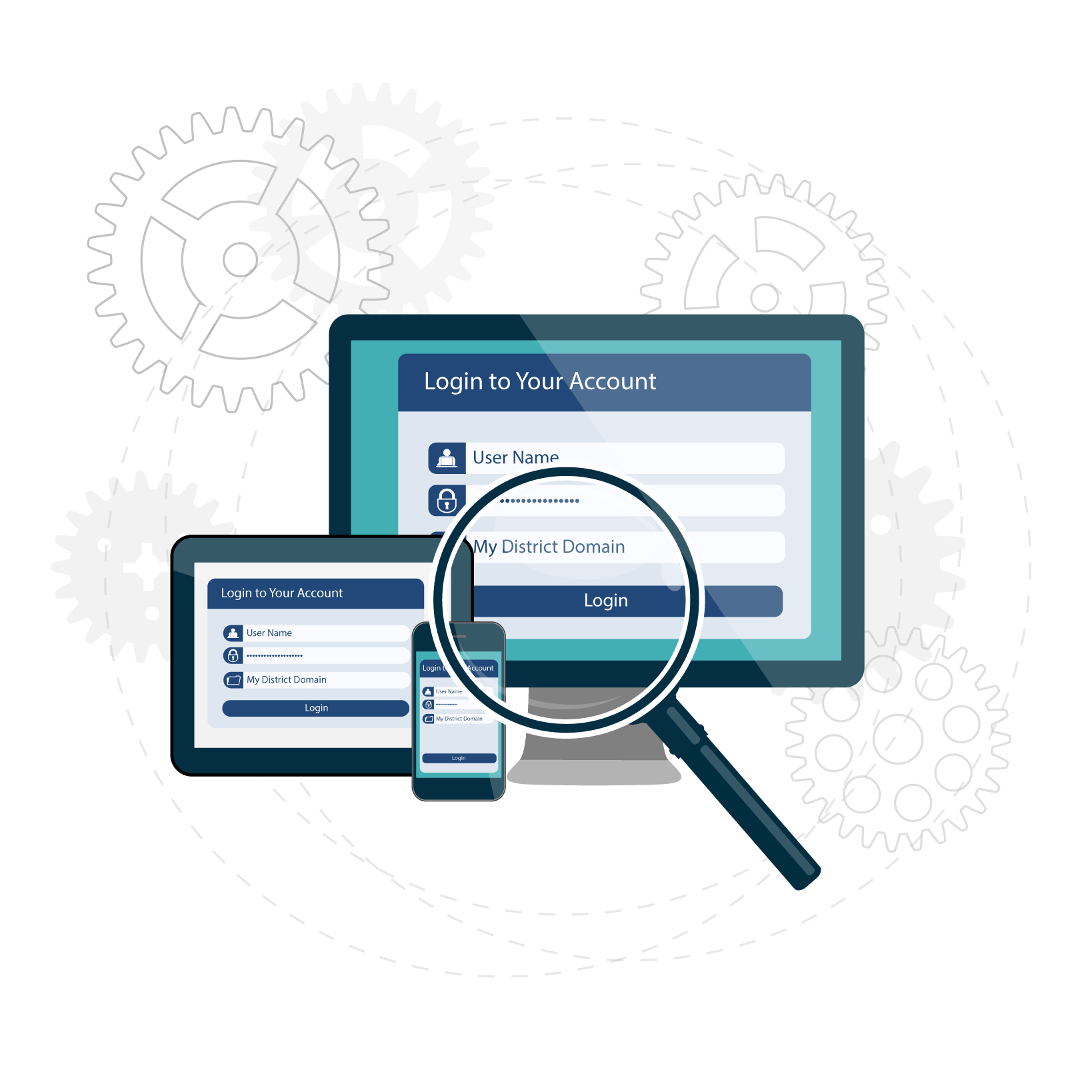Build a solid foundation for creating the complete picture
of your district through clean, up-to-date and standardized
data with the help of CPSI.
Districts use data that comes from many different applications and sources. Student data is entered into the Student Information System while Staff data is stored in the Human Resources System. The problem is that the data in the SIS and HR systems is locked into these applications and people have to re-enter the same data many times. Other applications – such as the cafeteria software, bus systems, library systems, teacher tools, learning management systems – also need this data. Entering data manually is frustrating for users, takes up too much time, and increases the chance of mistakes. The result of this is that data in critical applications is incorrect and out-of-date.
A common approach to addressing the issues of data collection from many different systems is to attempt to synchronize the data from the various sources using SQL scripts and batch file processing. Unfortunately, this method of collection is performed on a scheduled basis. The scheduled file uploads happen once a day, at best, and often times happen closer to once a week or once a month. In these cases, districts do not have data that is up-to-date enough to complete their state reporting or to deliver accurate student rosters to teachers in the classrooms.
When IT staff is loaded with the burden of collecting data in this manner, support tickets add up. This is due to district administrators having wrong data for their reports and teachers seeing incorrect data in their classrooms. This leads to frustration amongst the IT staff members because long hours are spent keeping data up to date. The issue costs the district time and money through wasted hours, especially during busy state reporting periods where the data is essential for district funding. Additionally, when technology becomes a burden on teachers, inaccurate and out-of-date data can lead to lower test scores, loss of funding, and even frustration from parents and students.
CPSI helps districts overcome these challenges. We help schools and districts finally leverage all kinds of data – from rosters to assessment data to attendance and more—across the entire district in real time. With CPSI, all of the school and district staff can be confident that the information on their computer or device always reflects the students and the true “picture” of the data in the district.
“As a teacher, I am assaulted by data on a daily basis.
I need the data I see to be accurate. I wish I could spend less time dealing with incorrect data in the software I use and spend more time doing what I do best – teaching.”“As an administrator, I rely on my data collection system
to provide up to date student data so I can make better decisions for my district based on what is happening right now in my district.”“As support staff I would love to spend less time managing AD
I wish we could automate the process of creating student and staff accounts. Why can’t it be easy?”“As a state, we need to manage the collection of thousands of students
data in a very short period of time. Traditional file uploads are just not meeting our needs, is there a better way?
Active Directory has no included automation tools to create users based on external source systems, such as an SIS.
District IT staff spends a lot of time creating and managing scripts to try to handle AD automation. This increases the amount of work for an IT staff that is already stretched to its limits.
CPSI’s xdAD lets your district staff take charge of automation with an easy to use environment. It eliminates the need for scripts and works with data from any source system to automate Active Directory.
District data is located in many different software applications.
Without a way to gather this information together, we cannot see the complete picture of the student. Using xDStore Rosters and Publishing Connectors, you can gather all of your data into one space.
This means that your data can be combined to create a complete picture of your students, staff and more. You can be sure the right players on your team always have the data they need to do their jobs well.


The data teachers and staff need is not always up-to-date.
If the data is stale, the data is not usable. Teachers need their rosters to match the student sitting in front of them. Administrators need the most up-to-date data to make decisions effectively.
Using the Provisioning Connectors, you can work with data truly in true real time. Unlike file uploads, spreadsheets, and other traditional models, data is collected as it is entered into the system. This means that the minute Mrs. Smith types in a new student in the Student Information System, that student appears on the roster list for the teacher in the classroom.
Garbage in, garbage out. Data entry is not always accurate.
When a teacher sees incorrect information in her software, classroom time is wasted and teachers get frustrated. The wasted classroom time means the teacher is spending less time teaching. That fact ultimately leads to lower test scores, loss of funding, questions on teacher performance and extra frustration for the district as a whole.
Using xDValidator, data is validated and checked based on the rules of your district in real time. Data entry staff is informed within minutes of a record entry of any issues with the record. Data entry staff corrects the data at the source, creating data that becomes reliable over time.
Without complete, up-to-date, and accurate data, reporting just doesn’t work.
Teachers and staff are quick to abandon software that does not appear to work for them because the data on the screen is not correct. District administrators need to analyze data using the complete picture of their district.
Using CPSI’s data automation and validation tools, you will be ready to report data using any software of your choice. With real time data, teachers will always see the correct data in their rosters. Administrators will have up-to-date and accurate information for district and state reporting needs.



